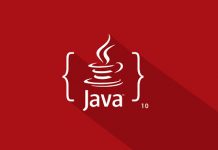Microservices Interview Questions|Most Asked Questions For Interview
Microservices interview questions Set 1
#1 What do you know about Microservices?
Microservices, aka microservice architecture, is an architectural style that structures an application as a collection of small autonomous services, modeled around a business domain.
- In layman terms, you must have seen how bees build their honeycomb by aligning hexagonal wax cells.
- They initially start with a small section using various materials and continue to build a large beehive out of it.
- These cells form a pattern resulting in a strong structure that holds together a particular section of the beehive.
- Here, each cell is independent of the other but it is also correlated with the other cells.
- This means that damage to one cell does not damage the other cells, so, bees can reconstruct these cells without impacting the complete beehive.

Refer to the above diagram. Here, each hexagonal shape represents an individual service component. Similar to the working of bees, each agile team builds an individual service component with the available frameworks and the chosen technology stack. Just as in a beehive, each service component forms a strong microservice architecture to provide better scalability. Also, issues with each service component can be handled individually by the agile team with no or minimal impact on the entire application.
#2 What are the main components of Microservices?
The main components for a Microservice Architecture are:
- Containers, Clustering, and Orchestration
- IaC [Infrastructure as Code Conception]
- Cloud Infrastructure
- API Gateway
- Enterprise Service Bus
- Service Delivery
#3 How does Microservice Architecture work?
A microservice architecture has the following components:

- Clients – Different users from various devices send requests.
- Identity Providers – Authenticates user or client identities and issues security tokens.
- API Gateway – Handles client requests.
- Static Content – Houses all the content of the system.
- Management – Balances services on nodes and identifies failures.
- Service Discovery – A guide to find the route of communication between microservices.
- Content Delivery Networks – Distributed network of proxy servers and their data centers.
- Remote Service – Enables the remote access information that resides on a network of IT devices.
#4 What are the fundamental characteristics of a Microservices Design?
Services split up and organized around business functionality.
- Separate modules handled and owned by different development teams.
- Decentralized Framework.
- Maintenance of respective modules by respective development teams.
- Separate modules may be maintained by different databases.
- Modules in a Microservice Architecture are separately deployable. They can be updated, enhanced, or deleted without disrupting the entire architecture.
- Real-time monitoring of the application.
#5 What are the main challenges in Microservice Deployment?
The challenges in Microservice can be both technical as well as functional.
From the point of business, the main challenges are:
- Require heavy investment
- Heavy Infrastructure Setup
- Excessive Planning for managing operations overhead
- Staff Selection and maintenance.
From a technical standpoint –
- Communication between different microservices in the application.
- Component automation
- Application maintenance
- Configuration Management
- Heavy Operations Overhead
- Deployment Challenges
- Testing and Debugging Challenges
#6 What is the difference between Monolithic, SOA, and Microservices Architecture?

- Monolithic Architecture is similar to a big container wherein all the software components of an application are assembled together and tightly packaged.
- A Service-Oriented Architecture is a collection of services that communicate with each other. The communication can involve either simple data passing or it could involve two or more services coordinating some activity.
- Microservice Architecture is an architectural style that structures an application as a collection of small autonomous services, modeled around a business domain.
# 7 What are the advantages and disadvantages of Microservices?
Advantages:
- Improved Scalability
- Fault Isolation
- Localized Complexity
- Increased Agility
- Simplified Debugging & Maintenance
- Better correspondence of developers with business users.
- Smaller development teams
- Better scope for technology upgradation.
Disadvantages:
- Complicated as a whole.
- Requires accurate pre-planning
- Modular dependencies are hard to calculate.
- Less control over third party applications
- Modular Interdependencies are challenging to track.
- More opportunities for malicious intrusions.
- Complete end-to-end testing is difficult.
- Deployment Challenges.
#8 What are the different strategies of Microservices Deployment?
- Multiple Service Instance per Host: Run single or multiple service instances of the application on single/multiple physical/virtual hosts.
- Service Instance per Host: Run a service instance per host.
- Service Instance per Container: Run each service instance in its respective container.
- Serverless Deployment: Package the service as a ZIP file and upload it to the Lambda function. The Lambda function is a stateless service that automatically runs enough micro-services to handle all requests.
#9 What is Domain Driven Design?
Domain-Driven Design is an architectural style based on Object-Oriented Analysis Design concepts and principles. It helps in developing a complex system by connecting the related components of the software system into a continuously evolving system. Domain-Driven Design is based on three core principles:
- Focus on the core domain and domain logic.
- Base complex designs on models of the domain.
- Regularly collaborate with the domain experts to improve the application model and resolve any emerging domain-related issues.
#10 What is PACT in Microservices Architecture?
A contract between a consumer application and a provider application is called a PACT. Each pact is a collection of interactions. It is an open-source tool that can be used to implement the Consumer-Driven Contract in Microservices.
Microservices interview questions Set 2
#11 How does Docker help in Microservices?
Microservices, as we know, are self-contained, individual units that perform only one business function, so much so that each unit can be considered an application on its own. The application development environment and application deployment environment are bound to vary in many aspects. This gives rise to deployment issues. Docker provides a static background for the application to run, thus avoiding deployment issues. It is, in fact, a containerization tool. It reduces overhead and deploys thousands of microservices on the same server. Docker ensures that an application microservices will run on their own environments and are entirely separate from their operating system.
#12 What are Reactive Extensions in Microservices?
Reactive Extensions is a design approach through which results are collected by calling multiple services in order to compile a combined response. Also known as Rx, these calls can be synchronous or asynchronous.
#13 What is End to End Microservices Testing?
End-to-end testing validates each and every process in the workflow is functioning properly. This ensures that the system works together as a whole and satisfies all requirements.
In layman terms, you can say that end to end testing is a kind of test where everything is tested after a particular period.

#14 What is DRY in Microservices architecture?
DRY stands for Don’t Repeat Yourself. It basically promotes the concept of reusing the code. This results in developing and sharing the libraries which in turn result in tight coupling.
#15 What is the use of Container in Microservices?
Containers are a good way to manage microservice-based applications to develop and deploy them individually. You can encapsulate your microservice in a container image along with its dependencies, which then can be used to roll on-demand instances of microservice without any additional efforts required.

#16 What is the difference between Mock or Stub?
Stub
- A dummy object that helps in running the test.
- Provides fixed behavior under certain conditions which can be hard-coded.
- Any other behavior of the stub is never tested.
For example, for an empty stack, you can create a stub that just returns true for empty() method. So, this does not care whether there is an element in the stack or not.
Mock
- A dummy object in which certain properties are set initially.
- The behavior of this object depends on the set properties.
- The object’s behavior can also be tested.
For example, for a Customer object, you can mock it by setting name and age. You can set age as 12 and then test for isAdult() method that will return true for age greater than 18. So, your Mock Customer object works for the specified condition.
#17 Can we create State Machines out of Microservices?
As we know that each Microservice owning its own database is an independently deployable program unit, this, in turn, lets us create a State Machine out of it. So, we can specify different states and events for a particular microservice.
For Example, we can define an Order microservice. An Order can have different states. The transitions of Order states can be independent events in the Order microservice.
#18 What is Eureka in Microservices?
Eureka is alternatively known as the Netflix Service Discovery Server. It uses Spring Cloud and is not heavy on the application development process.
#19 What is the role of an architect in Microservices architecture?
An architect in microservices architecture plays the following roles:
- Decides broad strokes about the layout of the overall software system.
- Helps in deciding the zoning of the components. So, they make sure components are mutually cohesive, but not tightly coupled.
- Code with developers and learn the challenges faced in day-to-day life.
- Make recommendations for certain tools and technologies to the team developing microservices.
- Provide technical governance so that the teams in their technical development follow the principles of Microservice.
#20 What is the Spring Batch Framework?
Spring Batch is an open-source framework for batch processing – execution of a series of jobs. Spring Batch provides classes and APIs to read/write resources, transaction management, job processing statistics, job restart, and partitioning techniques to process high volume data.
#21 What is Canary Releasing?
Canary Releasing is a technique to reduce the risk of introducing a new software version in production. This is done by slowly rolling out the change to a small subset of users before giving it out to the entire infrastructure, i.e. making it available to everybody.
#22 What is the purpose of Docker?
Docker provides a container environment that can be used to host any application. In this, the software application and the dependencies which support it are tightly-packaged together.
So, this packaged product is called a Container and since it is done by Docker, it is called Docker container!
#23 How can we eradicate non-determinism in tests?
Non-Deterministic Tests (NDT) are basically unreliable tests. So, sometimes it may happen that they pass and obviously sometimes they may also fail. As and when they fail, they are made to re-run to pass.
Some ways to remove non-determinism from tests are as follows:
- Quarantine
- Asynchronous
- Remote Services
- Isolation
- Time
- Resource leaks
Check it out Latest Jobs for Microservices Developer: Click here
If You Want To Get More Daily Such Jobs Updates, Career Advice Then Join the Telegram Group From Given Link And Never Miss Update.
Join Telegram Group of Daily Jobs Updates for 2010-2021 Batch: Click Here
Why You’re Not Getting Response From Recruiter?: Click here
How To Get a Job Easily: Professional Advice For Job Seekers: Click here
Cognizant Latest News: Up To 20K+ Employees Will Be Hired: Click here
COVID-19 Live Tracker India & Coronavirus Live Update: Click here
Why Remove China Apps took down from Play store?: Click here
Feel Like Demotivated? Check Out our Motivation For You: Click here
List of Best Sites To Watch Free Movies Online in 2020: Click here
5 Proven Tips For How To Look Beautiful and Attractive: Click here























